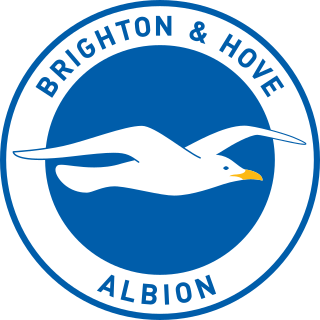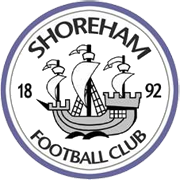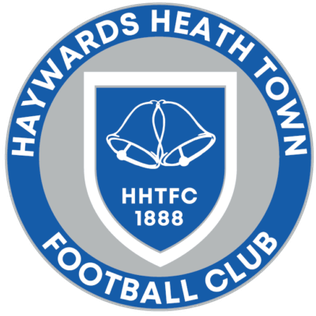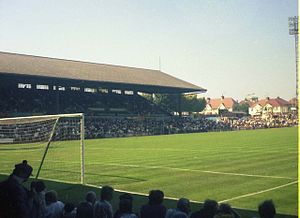
Brighton & Hove Albion Football Club is an English professional football club based in the city of Brighton and Hove. They compete in the Premier League, the top tier of the English football league system. The club's home ground is the 31,876-capacity Falmer Stadium in Falmer, in the north east of Brighton.

Falmer Stadium, known for sponsorship purposes as the American Express Stadium and more commonly referred to as the Amex, is a football stadium in Falmer, Brighton and Hove, East Sussex. With a capacity of 31,876, it is the second largest stadium in all of South East England, and the 31st largest stadium in the United Kingdom. The largest in South East England is St. Mary's Stadium (Southampton) with about 800 seats more.

Priestfield Stadium is a football stadium in Gillingham, Kent. It has been the home of Gillingham Football Club since the club's formation in 1893, and was also the temporary home of Brighton & Hove Albion Football Club for two seasons during the 1990s. The stadium has also hosted women's and youth international football matches and a London Broncos rugby league match.

Shoreham Football Club is a football club based in Shoreham-by-Sea, West Sussex, England. The club is affiliated to the Sussex County Football Association. They are currently members of the Southern Combination Premier Division and their home stadium is Middle Road. The club are nicknamed "The Musselmen" after the town's ancient mussel picking tradition. The club's home kit is all royal blue with white trim, and the away kit is all red with white trim.

Whitehawk F.C. is a semi-professional football club in Whitehawk, a suburb of the city of Brighton and Hove, England, which plays in the Isthmian League Premier Division. Whitehawk's home is the 3,126-capacity Enclosed Ground, within East Brighton Park. Nicknamed The Hawks, the club's traditional playing colours are red and white. Before 2010, the club had never played above County League level, but after three promotions in four seasons reached Conference South in 2013, and the second round of the FA Cup in 2015.

Haywards Heath Town Football Club is a football club based in Haywards Heath, West Sussex, England. They are currently members of the Southern Combination Premier Division and play at Hanbury Park.
The 1973–74 season was the 94th season of competitive football in England. Leeds United became league champions for the second time, finishing five points ahead of runners-up Liverpool in the First Division. Middlesbrough, Oldham Athletic and Peterborough United won the Second, Third and Fourth Divisions, respectively. Liverpool won their second FA Cup, beating Newcastle United in the final, while the League Cup final saw Wolverhampton Wanderers defeat Manchester City. In European club football, Tottenham Hotspur reached the UEFA Cup final but lost over two legs to Feyenoord.

Brighton & Hove Albion Women Football Club is an English women's football club affiliated with Brighton & Hove Albion. The club currently compete in the Women's Super League and the first team play at the Broadfield Stadium, home of Crawley Town F.C.
The 1995–96 Football League season was the 97th completed season of The Football League. It was contested through three divisions, the First Division, Second Division and Third Division.
John Herbert Edwin Shepherd was an English professional footballer who played as a inside forward. He played for Millwall, Brighton & Hove Albion and Gillingham between 1952 and 1961.
The 1986–87 season was the 88th completed season of The Football League.
The 1996–97 Football League was the 98th completed season of The Football League.
The history of Brighton & Hove Albion F.C. began in 1901. It first played in the Southern League, and was elected to the Football League in 1920. They won promotion to the First Division in the 1978–79 season, but were relegated in the 1982–83 season. They returned to the top flight for the 2017–18 season playing in the Premier League.
Ian Russell Chapman is an English former professional footballer. Born in Brighton, he spent most of his career with hometown club Brighton & Hove Albion.
The 2004–05 Football League Championship was the thirteenth season under its current league division format. It began in August 2004 and concluded in May 2005, with the promotion play-off finals. This was the first season to feature the rebranded Football League. The First Division, Second Division and Third Division were renamed the Football League Championship, Football League One and Football League Two respectively. Coca-Cola replaced the Nationwide Building Society as title sponsor.
The 2003–04 Football League First Division was the twelfth and final season of the league under the First Division name, and the twelfth season under its current league division format.

The Brighton & Hove Albion–Crystal Palace rivalry, sometimes nicknamed the A23 derby or the M23 derby only by the media, is the rivalry between English football teams Brighton & Hove Albion and Crystal Palace.
During the 1996–97 English football season, Brighton & Hove Albion F.C. competed in the Football League Third Division.
The 2015–16 season of the FA Women's Premier League is the 24th season of the competition, which began in 1992. Formerly the top flight of women's football in England, this season it sits at the third and fourth levels of the women's football pyramid, below the two divisions of the FA Women's Super League and above the eight regional football leagues.













